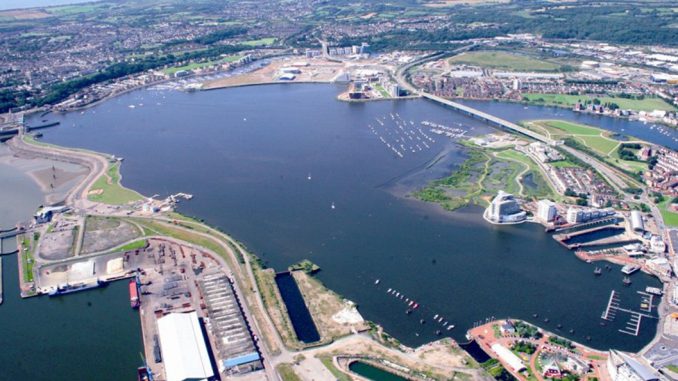
The importance of properly decommissioning unused pipe networks has been brought into the spotlight after it was revealed a former landfill is releasing leachate into Cardiff Bay.
Opened in 1969, the Ferry Road landfill site in Cardiff was created when the River Ely was straightened by cutting off one of its meandering bends which led to the Severn Estuary.
More than four million cubic metres of waste were dumped in the drained riverbed over the next 35 years until the landfill was closed in 1994 as pat of the Cardiff Bay development.
Where the estuaries of the Ely and the River Taff met was turned into an artificial 490-acre freshwater lake around the waterfront area, regenerating the south of the city.
The two rivers were impounded by the Cardiff Bay Barrage with the Ferry Road landfill and neighbouring Ely Fields turned into Grangemoor Park and the Cardiff Bay Retail Park.
When the landfill site had been operational, it had drained leachate directly into the Ely and the Taff. Leachate is formed when rainwater becomes contaminated with chemicals, waste and other by-products of decomposing rubbish found in landfill.
By 1996, a new system had been installed to deal with the leachate being produced by the now decommissioned site instead of draining into the two rivers.
Pumping wells were used to collect leachate so that it could be transferred to a treatment plant and introduced safely to the sewer network.
The system has however been undermined by a series of damaging mistakes, errors and failures, resulting in the release of leachate into Cardiff Bay.
When landfill sites and systems are decommissioned, it is vital that effective landfill pipe capping takes place to prevent the escape of leachate.
This did not happen at Ferry Road. In 2004 – a decade after the side had first been closed – it was discovered that one of the original pipes draining into the River Ely had not been properly closed off.
The pipe was subsequently sealed – but the problems with leachate escaping into Cardiff Bay remain ongoing despite the passage of approaching another two decades.
In 2017, local residents noticed pollution being released from an underground pipe. Frequent escapes of brown sludge, plastic litter and waste including syringes have been reported ever since.
An analysis of nearby groundwater in 2019 found the presence of ammonia, chloride, nickel and ammoniacal nitrogen – all common pollutants found in leachate.
Earlier this year, Natural Resources Wales (NRW) carried out an inspection which confirmed leachate was continuing to leak from the landfill site.
NRW believed that a major contributor to the problem was a pumping station installed during the 1996 upgrades to leachate treatment which was no longer operating correctly.
They also claimed that staff from Cardiff Council responsible for the site did know the purpose of the pumping station due to an ineffective handover process.
When the landfill was originally closed, responsibility for the site belonged to the Cardiff Bay Development Corporation before being passed to Cardiff Council.
Somewhere along the line, documents surrounding the history and how the leachate management system operated were lost.
Even more problematic was the disappearance of information relating to the pipe and drain network below the landfill.
This has left an unchartered network of underground pipes which could be either leaking in general through improper pipe capping or during extreme rainfall events when water and wastewater is flushed out.
A Cardiff Council spokesperson told Wales Online: “The area in question sees a large, complex, network of pipes laid through what was once a heavily-industrialised area and then a major landfill site.”
“These pipes, which were not laid by the council, are fed by storm drains, businesses, and homes and are designed to remove surface water and foul water.”
“Our investigations have been hampered by drain maps, given to the council when it took over the landfill site from Cardiff Bay Development Corporation, which contain several inaccuracies.”
“We are narrowing down potential causes, but this is a complicated issue and we cannot rule out that pipes laid through such contaminated land many years ago could, by now, be allowing small amounts of leachate to enter the surface-water network and that this is being picked up and flushed through when storm drains are full.
“We are working with NRW to provide them with a landfill management plan to ensure appropriate measures are put in place, once the source of the problem is located.”

Leave a Reply